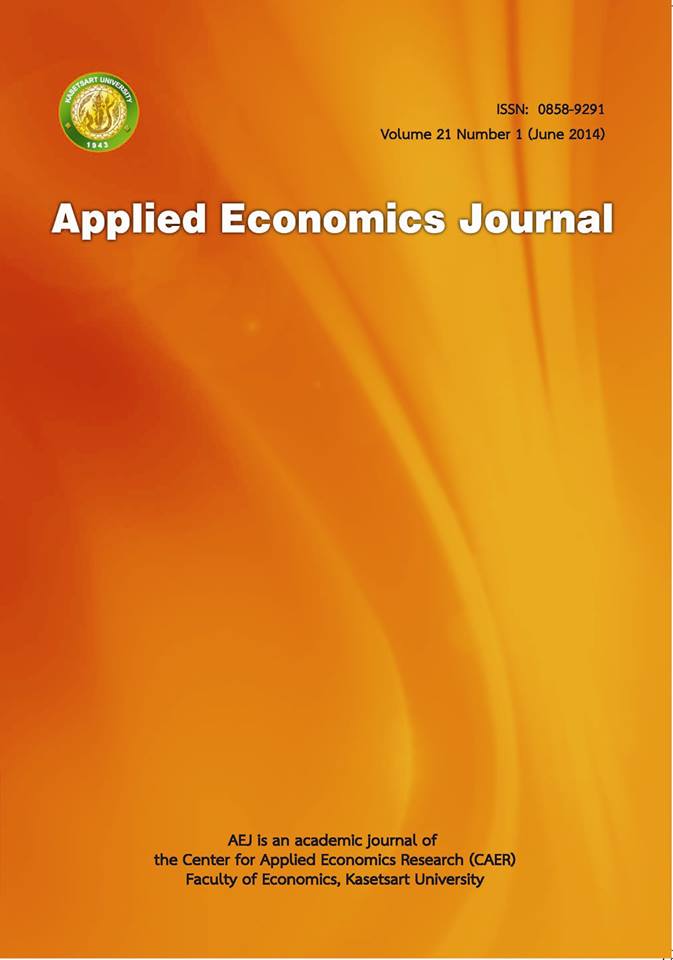Determinants of the Gold Futures Price Volatility: The Case of Thailand Futures Exchange
Main Article Content
Abstract
This research studies determinants of the gold futures price volatility in Thailand Futures Exchange using Linear Regression Model and Generalized Autoregressive Conditional Heteroskedasticity (GARCH) Model. The data sample consists of daily settlement price, volume, and open interest of gold futures from the first trading day in Thailand Futures Exchange to June 26, 2013. We examine the nearby futures contract, which is switched over to the next maturing contract one day before the expiration date. The results of both models confirm that price returns volatility of gold futures increases when (1) the futures contract approaches expiration (2) trading volume increases and (3) open interest decreases. We also present an analysis of the role of covariance between changes in spot prices and carry costs in explaining the maturity effect in futures. Our results provide very strong evidence in favor of this negative covariance hypothesis. Therefore, the results of this study would be of interest to investors due to their importance to forecast future prices of gold. Hedgers should adjust their optimal hedging position according to volatility changes. The analysis of gold futures volatility also insists the Clearing House in setting different margin requirements as each contract approaches maturity differently. Margin requirements should be raised for nearby gold futures contract as its volatility increases. Either an increase in trading volume or a decrease in open interest should also increase margin requirements for gold futures.
Article Details
The paper is published under CC BY-NC-ND, in which the article is freely downloaded and shared in its original form non-commercially and its citation details are identified.


